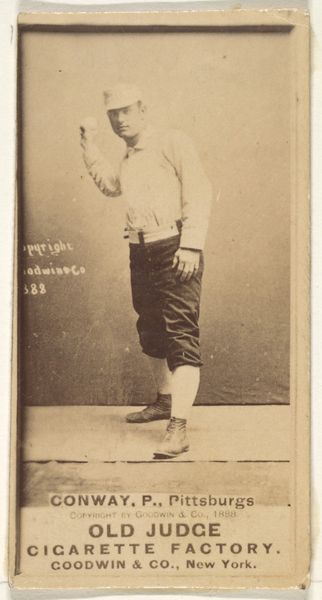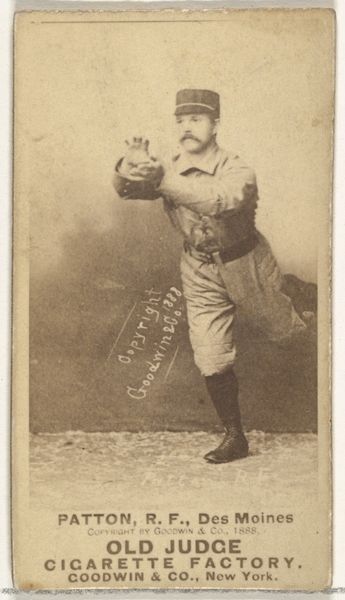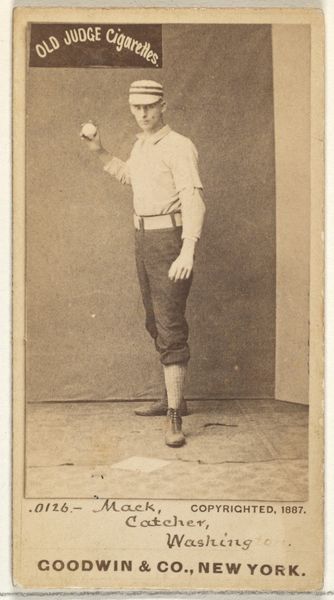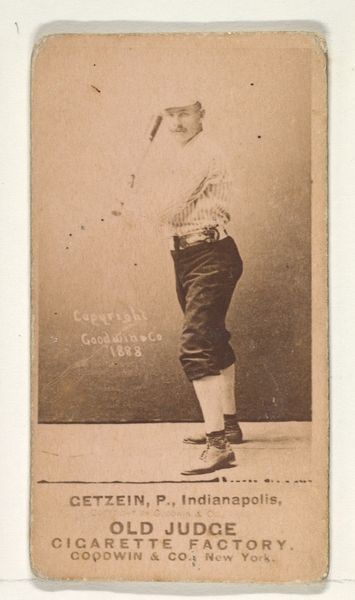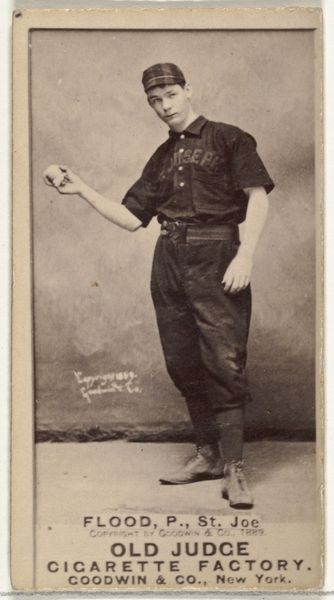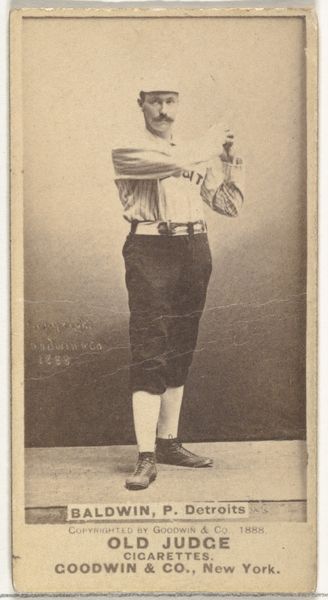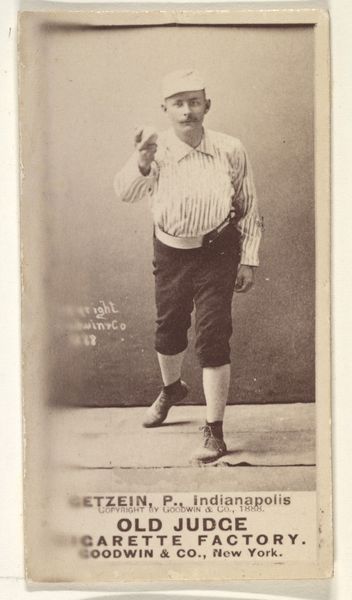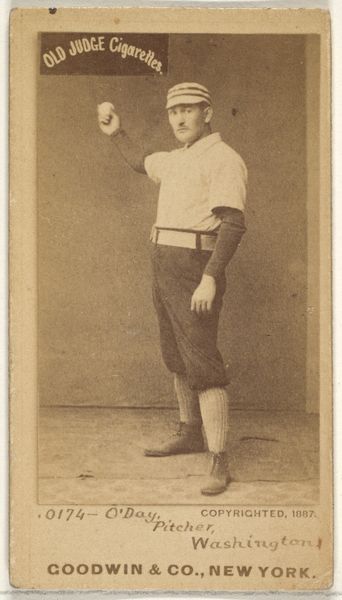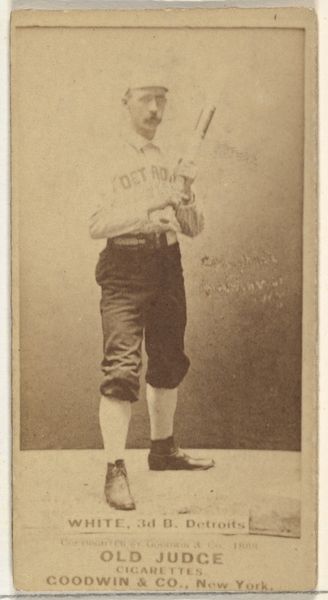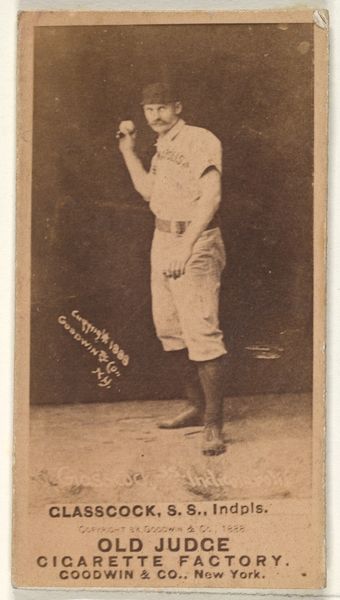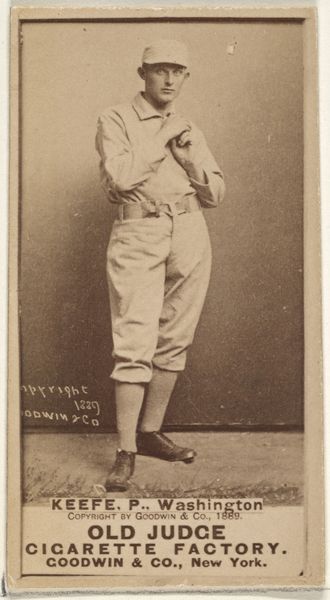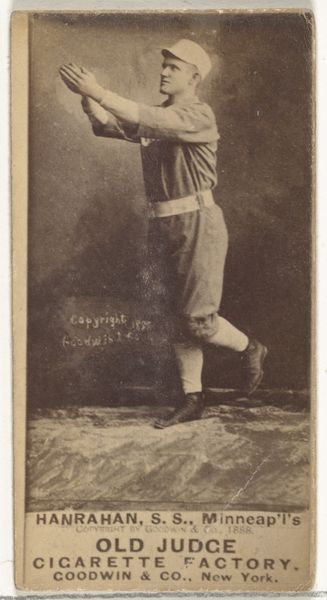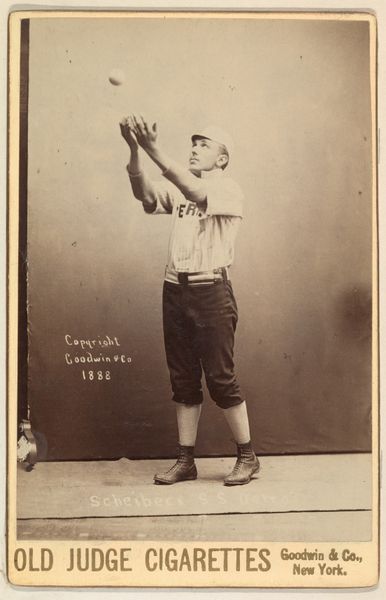
Conway, Pitcher, Indianapolis, from the Old Judge series (N172) for Old Judge Cigarettes 1889
0:00
0:00
drawing, print, photography
#
portrait
#
drawing
# print
#
baseball
#
photography
#
19th century
#
men
#
athlete
Dimensions: sheet: 2 11/16 x 1 3/8 in. (6.9 x 3.5 cm)
Copyright: Public Domain
Curator: Right now, we're looking at a piece titled "Conway, Pitcher, Indianapolis," part of the Old Judge series from 1889, a Goodwin & Company creation. Editor: It's a small thing, isn't it? Smaller than I imagined. The sepia tone lends this old-timey feel. You can almost smell the dust from a long-gone ballfield and tobacco from a different era. Curator: Precisely. These were trading cards included with Old Judge Cigarettes. The baseball craze was on, and this was savvy marketing—using popular figures like Conway to push their product. The image production must have been fascinating. How many images were generated to satiate demands and maintain supply? Editor: Consider the process. It is probably a photograph, then transferred to print; the way they mass-produced these little tokens is just as significant as Conway himself. This intersection of photography, printmaking, and the rising popularity of baseball shows us so much about late 19th-century material culture. How did Goodwin secure a photographer to attend games or engage the players in portraiture settings? It would speak volumes about production. Curator: Absolutely. And Conway, the pitcher – a tangible connection between the burgeoning celebrity culture and the common consumer. The image itself is less about artistic expression and more about documentation and popular appeal, which had real monetary outcomes in this early moment in commercialized baseball. Who decides who gets their picture taken and printed? That already shows you a level of prioritization that had impacts on all sorts of players. Editor: It speaks to baseball’s ascent as a spectacle, a source of manufactured idols consumed alongside cigarettes. Each card passed hand to hand as proof. And this object that persists tells a layered history. There's labor involved at every step. Curator: A labor not just of the athletes, but of the factory workers producing these cards. It underscores the interwoven narratives of leisure, consumption, and industrial labor that shaped the time. Thank you for reminding me that it also creates a broader scope of this sport’s legacy, a lens for us to think about. Editor: Thanks; a fascinating blend of sport, portraiture, labor and commercial enterprise materialized on a card. What is more to say?
Comments
No comments
Be the first to comment and join the conversation on the ultimate creative platform.
